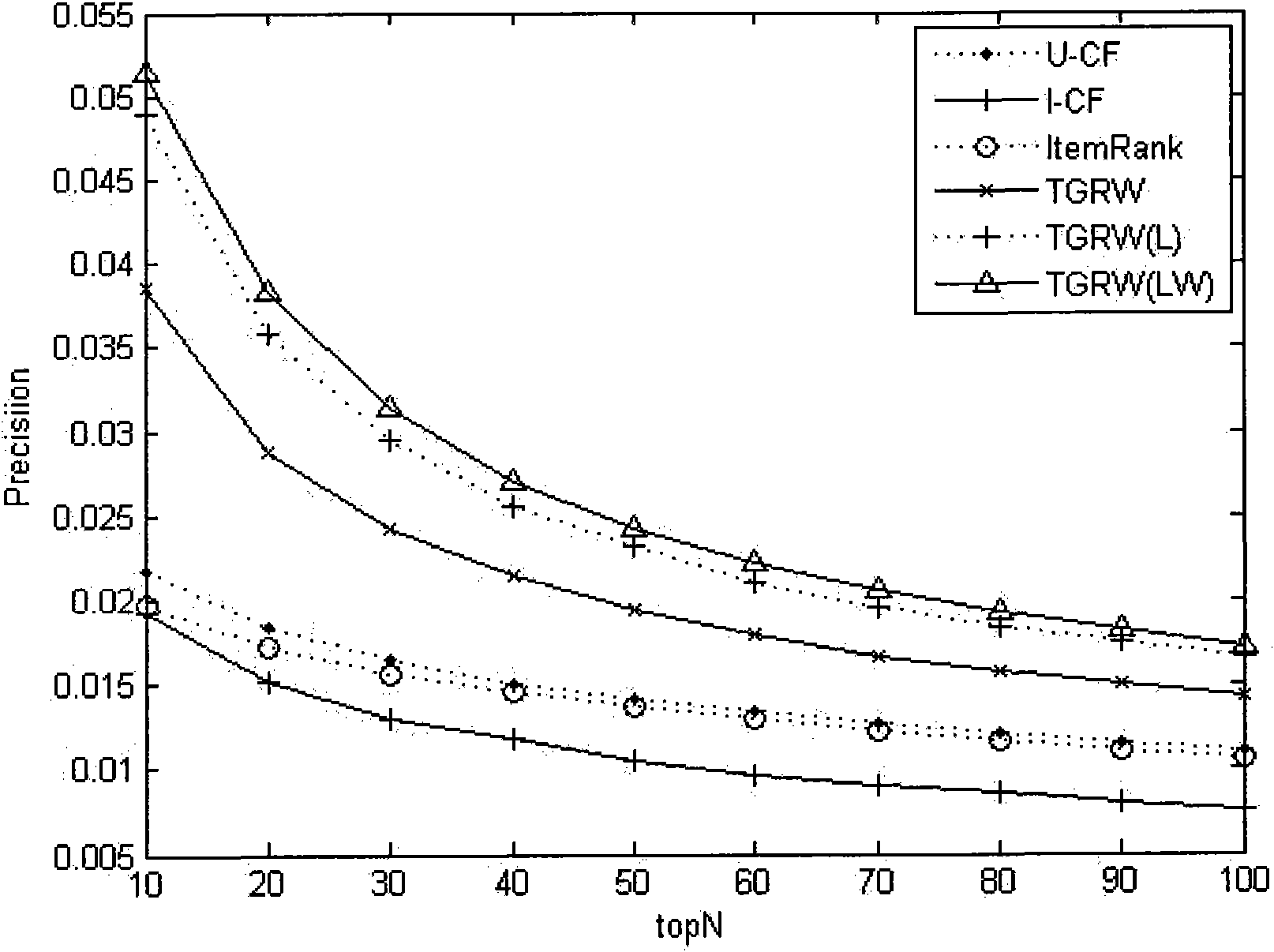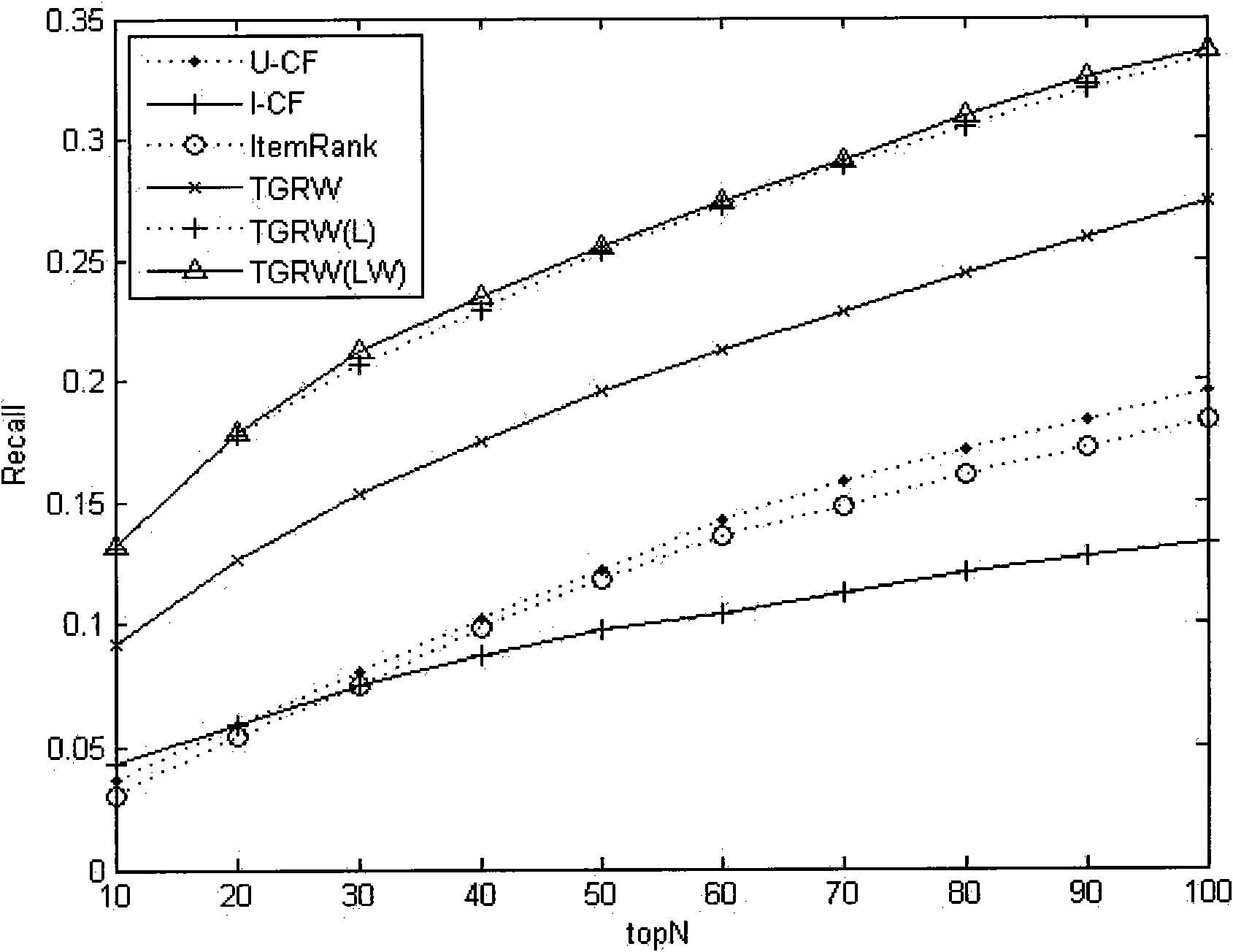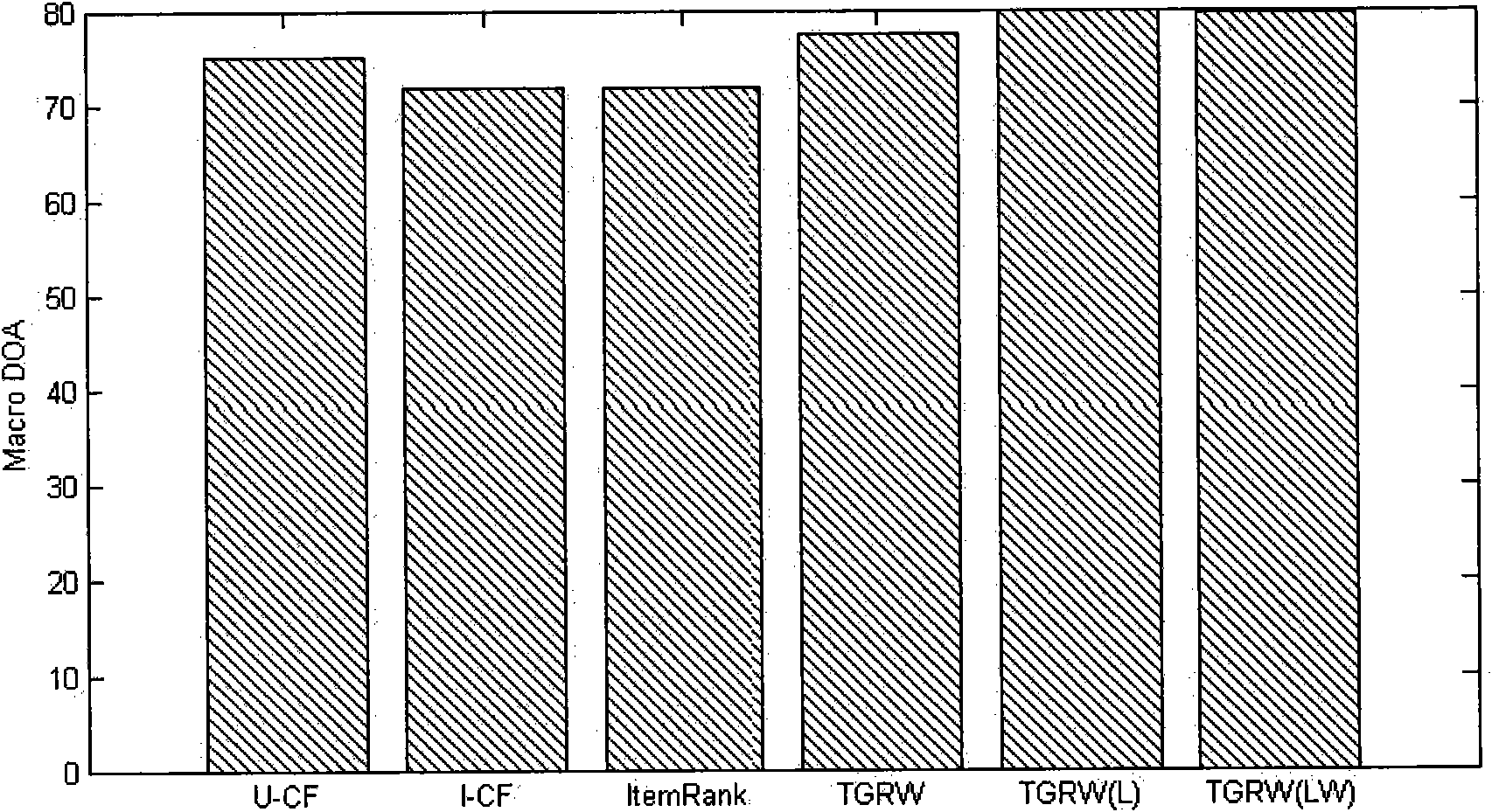Collaborative filtering method based on socialized label
A technology of social labeling and collaborative filtering, applied in the field of personalized recommendation, which can solve problems such as noise
- Summary
- Abstract
- Description
- Claims
- Application Information
AI Technical Summary
Problems solved by technology
Method used
Image
Examples
Embodiment
[0090] The data set of the experiment is taken from MovieLens ( http: / / www.grouplens.org / node / 73 ) from 10M data, from which we selected 861 users, 5003 items and 6147 tags, so that each user can at least rate and label 3 different items at the same time. For this part of the data set, we randomly divide it 5 times according to the ratio of 80% to 20%, and generate 5 different training sets and test sets. The final experimental results are the average of 5 experimental results.
[0091] In order to illustrate the effectiveness of the algorithm proposed by the present invention, we will also use three traditional collaborative filtering algorithms for comparative experiments, namely: user-based collaborative filtering algorithm (U-CF), item-based collaborative filtering algorithm (I- CF) and in a random walk algorithm (ItemRank) that does not use social tags. We experiment on each step of the method proposed by the present invention, namely: 1) TGRW implements step 1, and on...
PUM
 Login to View More
Login to View More Abstract
Description
Claims
Application Information
 Login to View More
Login to View More - R&D
- Intellectual Property
- Life Sciences
- Materials
- Tech Scout
- Unparalleled Data Quality
- Higher Quality Content
- 60% Fewer Hallucinations
Browse by: Latest US Patents, China's latest patents, Technical Efficacy Thesaurus, Application Domain, Technology Topic, Popular Technical Reports.
© 2025 PatSnap. All rights reserved.Legal|Privacy policy|Modern Slavery Act Transparency Statement|Sitemap|About US| Contact US: help@patsnap.com



